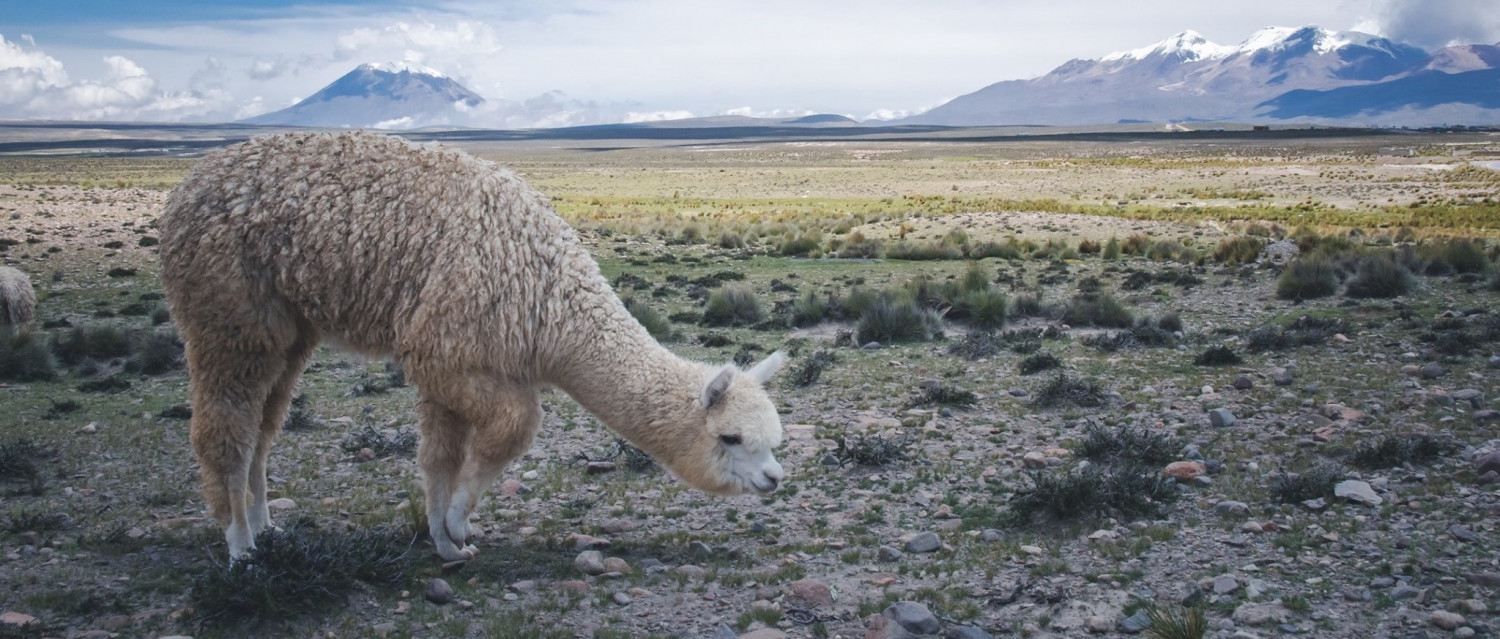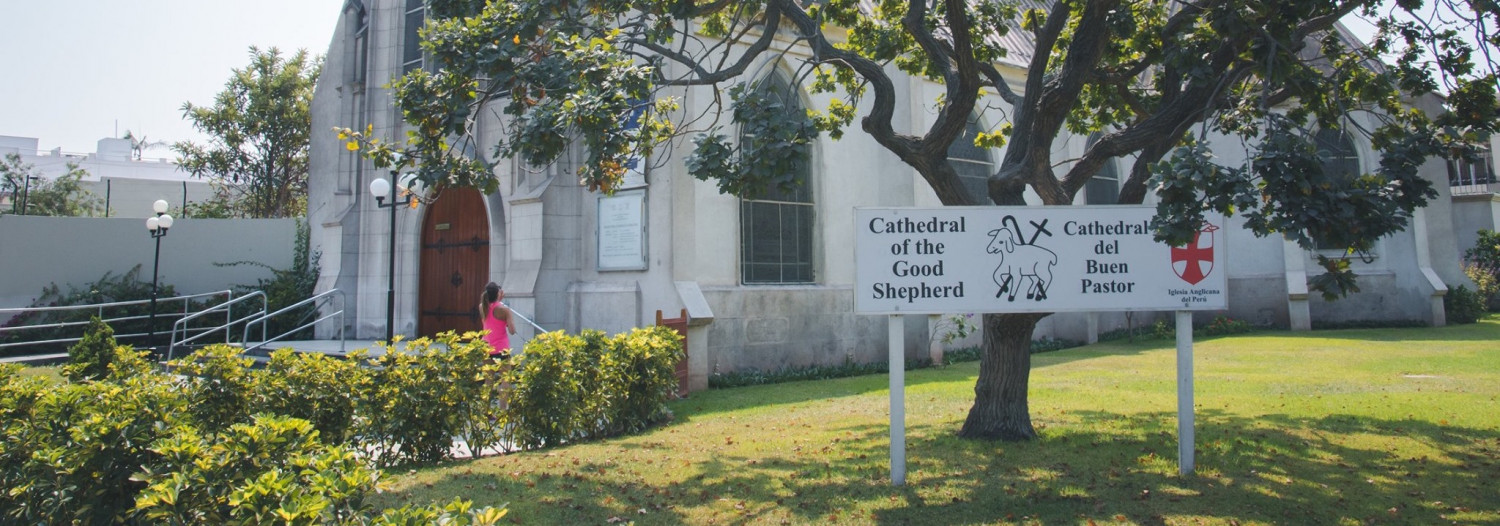
Lying just south of the Equator on the west coast of South America, Peru is probably best known for the Incas, llamas and Paddington Bear. Now recognised as having been home to one of the earliest civilisations on earth, there were several important cultures within the country’s current borders prior to the Incas, who were dominant at the time of the Spanish conquest in the sixteenth century. Covering 1.285 million km2 (around 496,000 miles2), Peru is one of the most diverse countries on the planet, encompassing a strip of coastal desert along the Pacific Ocean, the high peaks of the Andes, and the jungle areas of the Amazon basin. Of the population of around 31 million, a third or more live in the capital, Lima.
The Anglican Diocese of Peru
Although it comes as a surprise to many, Anglicanism has been present in Peru since the 1840s. A lucrative guano industry brought British and American entrepreneurs and workers to the country, while British engineers were also fundamental in the construction of the Peruvian railways. An Anglican church was built in the port city of Callao, adjacent to Lima, to serve these expatriate workers. This church subsequently moved into central Lima and then in 1949 to its present building, which is now the Cathedral of the Good Shepherd in the Lima district of Miraflores. For over a century, the church catered only to expatriates, but in 1977 the decision was taking to establish a Peruvian Anglican Church and the Diocese of Peru was formed. The diocese forms part of the Province of the Anglican Church of South America (from 1981 until 2014 the Province of the Southern Cone), which also includes the Dioceses of Argentina, Northern Argentina, Bolivia, Chile, Paraguay and Uruguay. Since 2015, the diocese has been officially called the Iglesia Anglicana del Perú (IAP, Anglican Church of Peru).

From these beginnings in one of Lima’s most upmarket districts, the IAP has spread into some of the poorest communities in the country. The majority of churches are naturally in Lima. Work began in Arequipa, the second city, in the 1980s, and there are now five Anglican communities serving this area. Following the 2007 earthquake, the IAP began work in Ica. Today churches, missions and congregations can also be found across the country in Cabanaconde, Cajamarca, Chiclayo, Huancayo, Jauja and Juliaca. These are organised into geographical areas, roughly equivalent to deaneries in the Church of England. The ultimate aim is that these areas will form the basis for future dioceses, although this is a long-term goal and Peru will remain one diocese for the foreseeable future.
Mission and Ministry
 The Bishop of Peru is the Rt Revd Jorge Luis Aguilar Ocampo. Originally trained in the Roman Catholic Church and ordained by Pope John Paul II, Bishop Jorge has been in the Anglican Church for many years. He served in various roles, including parish priest and head of the Anglican schools, before being consecrated as a suffragan bishop in July 2015. In April 2016, Jorge succeeded Bill Godfrey as diocesan bishop, thus becoming the first indigenous Anglican Bishop of Peru. There are some missionary clergy and lay workers from the UK still working in the IAP, but the majority of priests, deacons and lay ministers are now Peruvian.
The Bishop of Peru is the Rt Revd Jorge Luis Aguilar Ocampo. Originally trained in the Roman Catholic Church and ordained by Pope John Paul II, Bishop Jorge has been in the Anglican Church for many years. He served in various roles, including parish priest and head of the Anglican schools, before being consecrated as a suffragan bishop in July 2015. In April 2016, Jorge succeeded Bill Godfrey as diocesan bishop, thus becoming the first indigenous Anglican Bishop of Peru. There are some missionary clergy and lay workers from the UK still working in the IAP, but the majority of priests, deacons and lay ministers are now Peruvian.
The IAP aims to encompass the breadth of the Anglican tradition within a Peruvian missionary context. Worship is largely according to the new Peruvian Prayer Book, which is rooted in the tradition of the Book of Common Prayer, but also reflects the indigenous culture in many ways, not least music. Mindful of its context in a poor country, the diocese insists that each parish must have a social project addressing the needs of its local community. These range from the Shalom Centre (see the video below), which provides medical services and assistance to disabled children and their families, to the Noah’s Ark project providing a weekly playgroup for children in one of Lima’s poorest shanty towns, to a project working with the deaf in Juliaca. The diocese also has three schools: San Mateo (St Matthew) and Santísima Trinidad with Cristo Redentor (Holy Trinity with Christ the Redeemer) in Lima, and San Lucas (St Luke) in Arequipa.
With the diocese being a country five times the size of the UK, there are obviously geographical challenges in delivering ministry in Peru. Bringing clergy together for meetings involves considerable energy, since the journey to Lima from distant centres such as Juliaca takes almost a day by bus. As the Anglican Church ministers mainly to the poor, there are also significant financial challenges, since raising sufficient funds for basic costs like ministerial stipends is a major problem. Language is another issue, since in many Andean communities, Spanish is not widely used or known. Quechua and other indigenous languages are far more common in these highland areas, and only a tiny number of clergy can minister in these languages.
The Diocese of Worcester and the Anglican Church of Peru
A Companion Link agreement between the Diocese of Worcester and what was then the Diocese of Peru and Bolivia was signed in 1992. After Peru and Bolivia became separate dioceses in 1996, it was decided to retain the link with Peru. The partnership agreement was reviewed and renewed in 1996, 2002 and 2012. Worcester is one of only three Church of England dioceses to have a link with a diocese in South America.
The fundamental purpose of the link is relationship between two dioceses of the Anglican Communion in very different contexts. We aim to pray, journey and learn together, sharing with each other our experiences, mission and ministry. Clergy from Peru are invited to the UK for the clergy conference, and often on other occasions, while there are also regular visits from Worcester to Peru. Visits both ways highlight the amount we can learn from each other and the enrichment of sharing together in God’s mission. Under the umbrella of the diocesan link, individual links exist between parishes and schools in the two dioceses.
Giving to the Diocese of Peru
For the past few years, during Lent we have alternated raising money for our link dioceses in Peru and Morogoro. We are hugely grateful to parishes for their generosity and there is no doubt that the funds we’re able to send make a real difference in both countries. If you would like to donate to the Diocese of Worcester Peru Fund, please give here.
The Peru Task Group
The Peru Task Group oversees the management of the link with Peru, arranging the programme for visitors from Peru and also organising events to raise awareness of the Anglican Diocese of Peru and encourage and foster links.
More Information
For more information about the link with Peru, or to get involved, please contact Phil Bradford, Chair of the Peru Task Group (Tel: 01905 423794, Email: phillipbradford@yahoo.com)